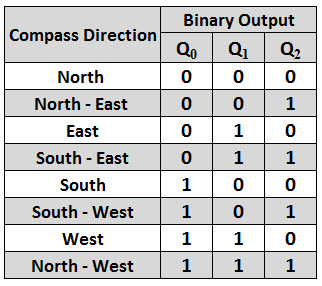

Integer part of this number is 1457 and fractional part of this number is 0.236. ExampleĬonsider the octal number 1457.236.


That means, each position has specific weight, which is power of base 8. Similarly, the successive positions to the right of the octal point having weights of 8 -1, 8 -2, 8 -3 and so on. In this number system, the successive positions to the left of the octal point having weights of 8 0, 8 1, 8 2, 8 3 and so on. Similarly, the part of the number that lies to the right of the octal point is known as fractional part. The part of the number that lies to the left of the octal point is known as integer part. So, the numbers ranging from 0 to 7 are used in this number system. The base or radix of octal number system is 8. Similarly, the digits 0, 1 and 1 of fractional part have weights of 2 -1, 2 -2, 2 -3 respectively.ġ101.011 = (1 × 2 3) + (1 × 2 2) + (0 × 2 1) + (1 × 2 0) + (0 × 2 -1) +Īfter simplifying the right hand side terms, we will get a decimal number, which is an equivalent of binary number on left hand side. The digits 1, 0, 1 and 1 of integer part have weights of 2 0, 2 1, 2 2, 2 3 respectively. Integer part of this number is 1101 and fractional part of this number is 0.011. ExampleĬonsider the binary number 1101.011. That means, each position has specific weight, which is power of base 2. Similarly, the successive positions to the right of the binary point having weights of 2 -1, 2 -2, 2 -3 and so on. In this number system, the successive positions to the left of the binary point having weights of 2 0, 2 1, 2 2, 2 3 and so on. Similarly, the part of the number, which lies to the right of the binary point is known as fractional part. The part of the number, which lies to the left of the binary point is known as integer part. So, the numbers 0 and 1 are used in this number system. The base or radix of this number system is 2. Binary Number SystemĪll digital circuits and systems use this binary number system. Similarly, the digits 2, 4 and 6 have weights of 10 -1, 10 -2 and 10 -3 respectively.ġ358.246 = (1 × 10 3) + (3 × 10 2) + (5 × 10 1) + (8 × 10 0) + (2 × 10 -1) +Īfter simplifying the right hand side terms, we will get the decimal number, which is on left hand side. The digits 8, 5, 3 and 1 have weights of 100, 101, 10 2 and 10 3 respectively. Integer part of this number is 1358 and fractional part of this number is 0.246. That means, each position has specific weight, which is power of base 10 ExampleĬonsider the decimal number 1358.246.

Similarly, the successive positions to the right of the decimal point having weights of 10 -1, 10 -2, 10 -3 and so on. In this number system, the successive positions to the left of the decimal point having weights of 10 0, 10 1, 10 2, 10 3 and so on. Similarly, the part of the number that lies to the right of the decimal point is known as fractional part. The part of the number that lies to the left of the decimal point is known as integer part. So, the numbers ranging from 0 to 9 are used in this number system. The base or radix of Decimal number system is 10. The following number systems are the most commonly used.
#Decimal to bcd priority encoder k map how to#
In this chapter, let us discuss about the popular number systems and how to represent a number in the respective number system. So, we will get various number systems, by choosing the values of radix as greater than or equal to two. The total numbers present in that number system is ‘r’. If base or radix of a number system is ‘r’, then the numbers present in that number system are ranging from zero to r-1.


 0 kommentar(er)
0 kommentar(er)
